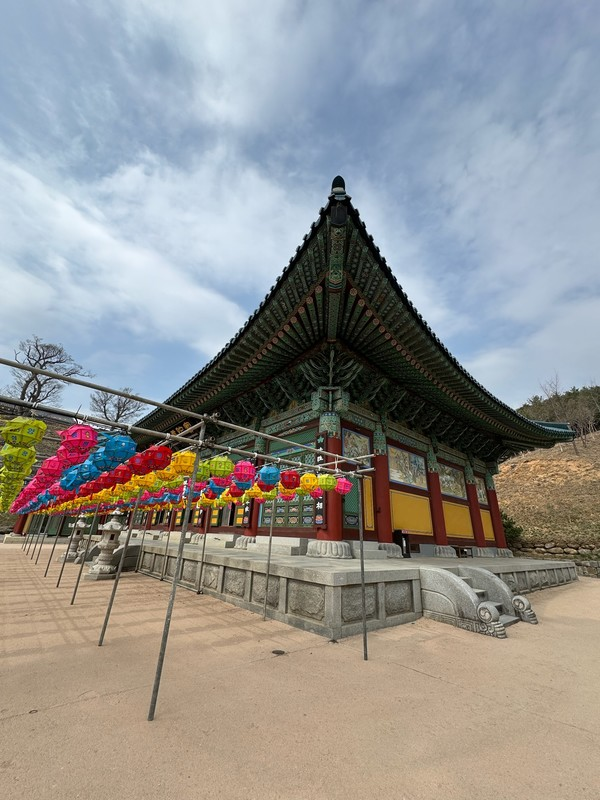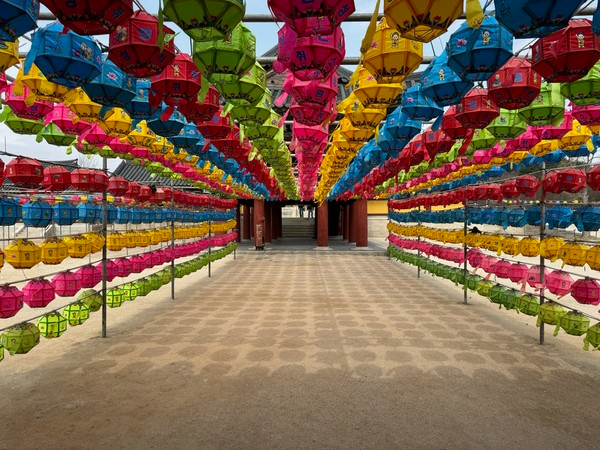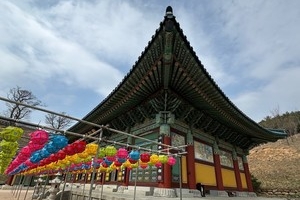- Templestay at Naksansa Temple July 02, 2024
-
An immersive retreat into ancient Buddhist traditions
EMBARK ON a serene escape to the northeast coast of South Korea, where tranquility meets breathtaking landscapes. Begin your journey with a two-day Templestay at Naksansa Temple, immersing yourself in the ancient traditions of Korean Buddhism and disconnecting from the hustle of everyday life. Delve into the Gangwon temple culture, learn about its rich history, and embrace the surrounding nature.
 PHOTOGRAPHED BY ALEC BUCHSCulture and history of Templestays in South Korea
PHOTOGRAPHED BY ALEC BUCHSCulture and history of Templestays in South Korea
Templestays in South Korea offer a unique opportunity to explore the cultural and spiritual heritage of Korean Buddhism. Originating in China before spreading to Korea in the fourth century, Buddhism became deeply ingrained in the peninsula's heritage, with grand temples like Jeongneungsa and Hwangnyongsa symbolizing its influence[1]. In 2002, Templestay programs emerged, allowing these sacred spaces to be open to the public for the first time, fostering cultural exchange and offering an immersive experience into Korean Buddhist teachings and traditions.
Spearheaded by the Jogye Order of Korean Buddhism, these programs have gained global recognition, attracting visitors seeking spiritual enrichment and cultural understanding. Today, Templestay programs thrive, providing both local and foreign participants with transformative experiences of Korean Buddhist teachings, rituals, and meditation practices[2]. PHOTOGRAPHED BY ALEC BUCHS
PHOTOGRAPHED BY ALEC BUCHS
Templestay at Naksansa Temple
I started my journey from Seoul, driving through the picturesque Korean mountains, passing serene lakes and lush hillsides along the way. After about three hours, I finally arrived at my destination on the east coast: Naksansa Temple. It is situated between the eastern Taebaek mountain ranges, near the city of Sokcho. With an extensive history spanning over 1,300 years, this revered temple is associated with Mahayana Buddhism and attracts many pilgrims and visitors drawn not only by its religious significance but also by its stunning natural scenery overlooking the East Sea[3].Parking my car, I made my way up the hill to the first building, the Inworyo, where I was warmly greeted by the staff. The building, although newly constructed after a devastating fire in 2005, retained the old charm and traditions of the temple. I was shown to my room, which was a comfortable dormitory that could accommodate up to six people. The rooms were modern and equipped with private bathrooms, with separate accommodations for men and women. I was then provided with traditional clothing to wear for the remainder of my stay. Donning the elegant attire, I felt connected to the cultural heritage of the Naksansa Temple and its surroundings.
This article was contributed by Yonsei University's student-led English monthly, The Yonsei Annals, written by Alec Buchs.
Read the full article at the Yonsei Annals' website: http://annals.yonsei.ac.kr/news/articleView.html?idxno=11236
show mobile menu
mobile menu




